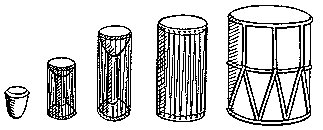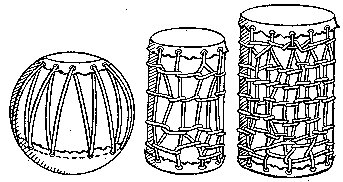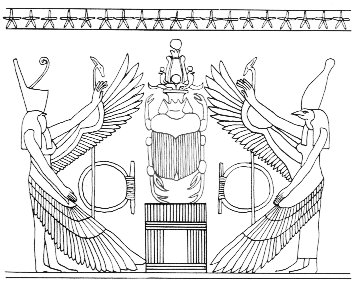|
TRANSLATIONS
Let us return to Friday:
In Hb9-49 and Pb10-53 we have a sign for darkness, I believe, the time when Venus is invisible (or as if inside the earth). In Hb9-50 and Pb10-54 we see Venus in its two different visible phases (morning and evening star). In P the picture seems to be a description of the 'broken orbit', while in H the appearance is two 'planets' (simple circles), with 7 + 7 irregular marks as if to indicate something else. This something else presumably should be interpreted as a fortnight, i.e. a signal to read a week as half a fortnight. We compare with Aa8-28--29:
The year is composed of two half-years, the fortnight of two weeks and the month of two main phases. 7 + 7 = 14, 14 + 14 = 28 = 4 * 7. 360 = 180 + 180 = 4 * 90. Hb9-50 is similar to Aa8-28--29, both in appearance and in meaning. The tapa mea (GD55) indicates sun in its visible phase, the 'red cloth', while the 'black cloth' is the opposite - 'death'. If the marks are all around, as in the two 'planet' signs in Hb9-50, we could possibly understand that to mean light also during the night. Another possibility is to read the marks as signs of life and then light (life) all around is an adequate description of the pregnant phase. As in Aa8-31. The 6th drum is round and we can see that also the Dogon connected sun with number 6:
If sun is number 6, then we should transform the week into:
"... 'The life-force of the earth is water. God moulded the earth with water. Blood too he made out of water. Even in a stone there is this force, for there is moisture in everything. But if Nummo is water, it also produces copper. When the sky is overcast, the sun's rays may be seen materializing on the misty horizon. These rays, excreted by the spirits, are of copper and are light. They are water too, because they uphold the earth's moisture as it rises. The Pair excrete light, because they are also light... " (OgotemmÍli)
"... 'The sun's rays,' he went on, 'are fire and the Nummo's excrement. It is the rays which give the sun its strength. It is the Nummo who gives life to this star, for the sun is in some sort a star.' It was difficult to get him to explain what he meant by this obscure statement. The Nazarene made more than one fruitless effort to understand this part of the cosmogony; he could not discover any chink or crack through which to apprehend its meaning. He was moreover confronted with identifications which no European, that is, no average rational European, could admit. He felt himself humiliated, though not disagreeably so, at finding that his informant regarded fire and water as complementary, and not as opposites. The rays of light and heat draw the water up, and also cause it to descend again in the form of rain. That is all to the good. The movement created by this coming and going is a good thing. By means of the rays the Nummo draws out, and gives back the life-force. This movement indeed makes life. The old man realized that he was now at a critical point. If the Nazarene did not understand this business of coming and going, he would not understand anything else. He wanted to say that what made life was not so much force as the movement of forces. He reverted to the idea of a universal shuttle service. 'The rays drink up the little waters of the earth, the shallow pools, making them rise, and then descend again in rain.' Then, leaving aside the question of water, he summed up his argument: 'To draw up and then return what one had drawn - that is the life of the world' ..." (OgotemmÍli) |






